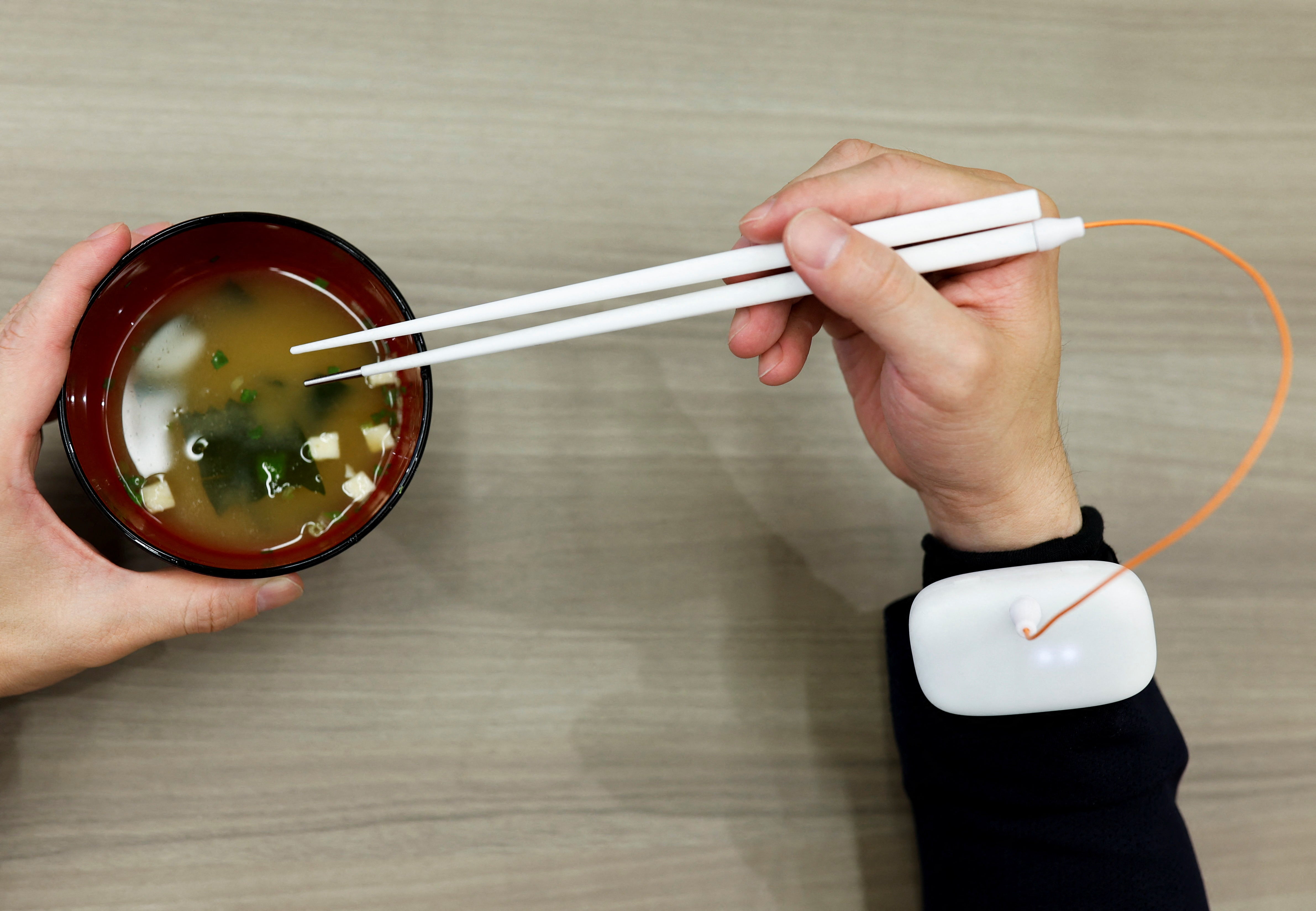Researchers in Japan develop chopsticks that artificially create the taste of salt
The chopsticks enhance the taste by using electrical stimulation

Your support helps us to tell the story
From reproductive rights to climate change to Big Tech, The Independent is on the ground when the story is developing. Whether it's investigating the financials of Elon Musk's pro-Trump PAC or producing our latest documentary, 'The A Word', which shines a light on the American women fighting for reproductive rights, we know how important it is to parse out the facts from the messaging.
At such a critical moment in US history, we need reporters on the ground. Your donation allows us to keep sending journalists to speak to both sides of the story.
The Independent is trusted by Americans across the entire political spectrum. And unlike many other quality news outlets, we choose not to lock Americans out of our reporting and analysis with paywalls. We believe quality journalism should be available to everyone, paid for by those who can afford it.
Your support makes all the difference.Researchers in Japan have developed chopsticks that artificially create the taste of salt to reduce sodium levels in a person’s food intake.
Touted to be one of a kind, the chopsticks enhance the taste of food by using electrical stimulation and a mini-computer worn on the person's wristband.
Co-developed by Meiji University professor Homei Miyashita and beverage maker Kirin Holdings, the device uses a weak electrical current to transmit sodium ions from food to the mouth of the eater through the chopsticks.
"As a result, the salty taste enhances 1.5 times," Mr Miyashita told Reuters.
The developers said they are expecting the refined prototype to be released into the consumer market by the next year, which might have particular relevance in Japan, where the traditional diet favours salty umami tastes.
According to reports, the average Japanese adult consumes about 10g of salt per day, double the amount recommended by the World Health Organisation. The Japanese health ministry has proposed reducing daily salt consumption to a maximum of 7.5g for men and 6.5g for women.
Excess sodium intake is often related to increased incidence of high blood pressure and other ailments.
“To prevent these diseases, we need to reduce the amount of salt we take,” said Kirin researcher Ai Sato. “If we try to avoid taking less salt in a conventional way, we would need to endure the pain of cutting our favourite food from our diet, or endure eating bland food,” the researcher added.
Japanese researchers in 2016 reportedly created an electric fork that enhanced the flavours of both salty and sour.
Mr Miyashita and his lab are known for exploring different ways to engage technology in the stimulation of human sensory experiences. In 2021, he developed a lickable TV screen that can imitate various food flavours.
”The goal is to make it possible for people to have the experience of something like eating at a restaurant on the other side of the world, even while staying at home,” he said.
Join our commenting forum
Join thought-provoking conversations, follow other Independent readers and see their replies
Comments